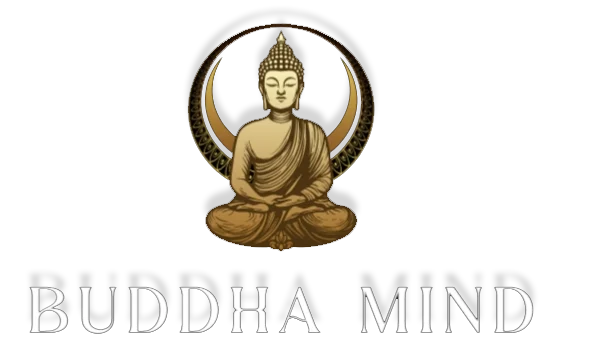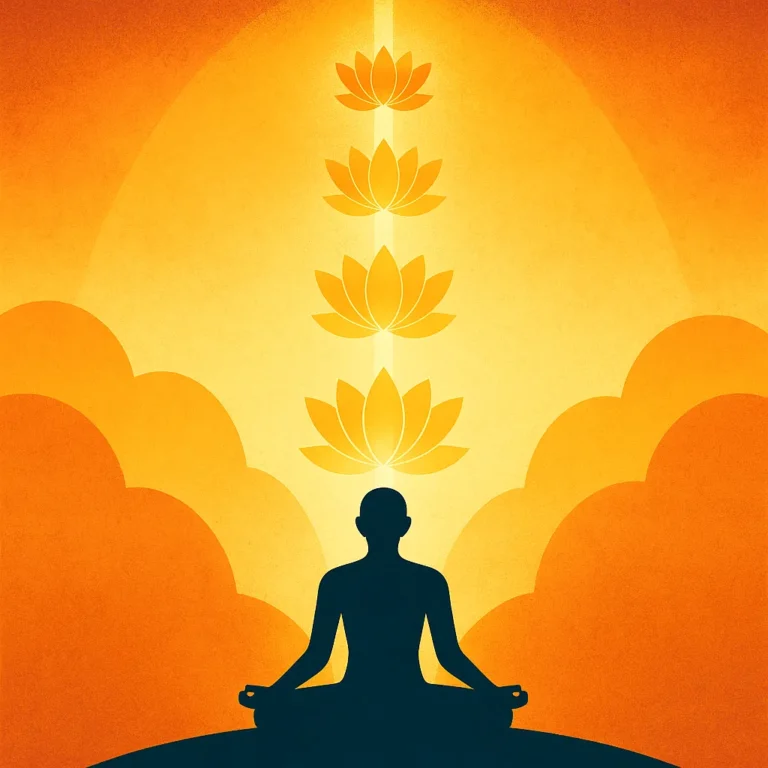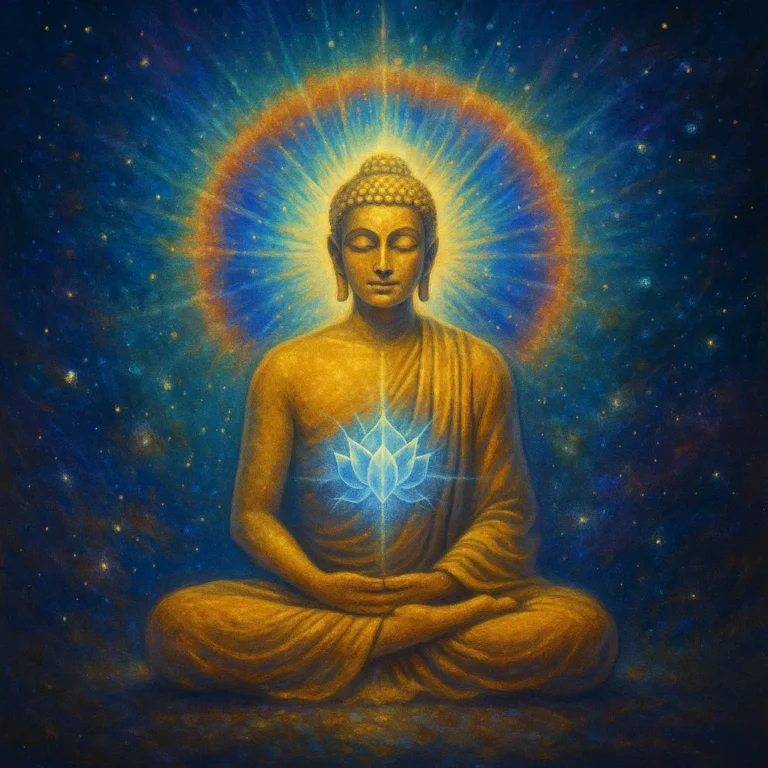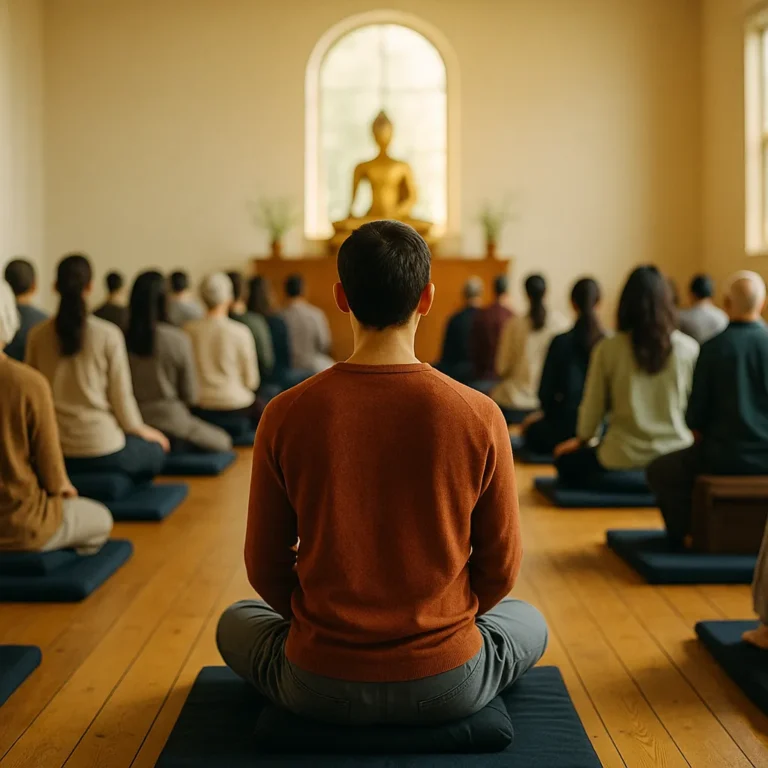The Central Role of Devotion in Spiritual Practice
Many seekers begin their spiritual journey through reading, watching, and learning—but eventually find themselves overwhelmed by complexity. Every teacher has a different message, every book offers another method, and every path seems to promise results. Yet, as Jagadguru Shree Kripaluji Maharaj beautifully emphasizes, the ultimate message is simple: Love God.
In the line:
ग्रन्थ पढ़ु जनि बहुत सुनु जनि, संत मत बहु प्यारे
(Don’t read endless scriptures, don’t listen to too many views.)
Kripaluji Maharaj warns us not against learning, but against getting lost in learning. There are hundreds of scriptures in Hinduism—from the Vedas and Puranas to countless commentaries and yogic practices. Some teach Kundalini awakening, others promote chakra concentration or austerities.
But let’s be real: If you tried to read everything, it would take over 500 years. And by the end, you might be more confused than enlightened.
श्रुतिर्विभिन्ना स्मृतयश्च भिन्ना नैको मुनिर्यस्य वचोप्रमाणम्
The scriptures differ; so do the sages. Truth lies hidden. Follow the path of the realized.
What Does All That Reading Really Teach?

After writing hundreds of thousands of verses across 18 Puranas, the Mahabharata, and embedding the Bhagavad Gita, even Ved Vyas concluded:
आलोड्य सर्वशास्त्राणि विचार्य च पुनः पुनः |
इदमेकं सुनिष्पन्नं ध्येयो नारायणः हरिः ||
“I have reviewed all scriptures. The final truth is—meditate upon Narayan (God).”
Why Devotion (Bhakti) Is the Simplest—and Deepest—Path
In today’s digital age, we are flooded with options: stream a discourse on YouTube, follow spiritual influencers, join WhatsApp satsangs. Yet confusion persists. One teacher says chant Hanuman Chalisa, another says perform yajna, a third insists on chakra alignment. Where do we turn?
Bhakti, or loving devotion, cuts through this noise.
पोथी पढ़ि-पढ़ि जग मुआ, पंडित भया न कोय,
ढाई अक्षर प्रेम का, पढ़े सो पंडित होय।
“Many died reading books; none became wise. Only he who learns love becomes truly learned.” — Kabir Das
The lesson? Love—not logic—is the real foundation of spiritual growth.
Table: Why Devotion Outshines Complexity
| Aspect | Scripture-Centric Path | Devotion-Based Path (Bhakti) |
|---|---|---|
| Learning Curve | High—requires years of study | Gentle—accessible to all |
| Risk of Confusion | High due to contradictory teachings | Low—focuses on feeling and surrender |
| Spiritual Focus | External knowledge | Internal connection with God |
| Time Required | Lifelong commitment to study | Begins instantly with heartfelt sincerity |
| Accessibility | Limited to educated or trained minds | Open to everyone—any age, background, or skill |
Did you know? The Bhagavad Gita declares bhakti as the highest yoga, stating:
भक्त्या मामभिजानाति – Only through devotion can I truly be known.
Why Our Minds Resist Simplicity
Here’s a truth many won’t admit: our intellect often mistrusts ease. We think that only something complicated must be valuable. That’s why spiritual seekers are drawn to elaborate rituals—like climbing hills to visit temples—while neglecting the divine presence already within.
As Kripaluji Maharaj puts it:
चारो धाम काहे करे गोविन्द राधे, तेरा हरि तेरे उर बैठा है बता दे
“Why run to the four holy sites when God resides in your heart?”
Still, people believe the Vishnu on a mountaintop is “more powerful” than the one in their neighborhood temple—because our egos love external effort over internal stillness.
Why Complex Paths Exist in the First Place

If devotion is the true essence of sadhana, why do scriptures describe so many other paths—like Kundalini awakening, Panchagni Kriya, and breath-control practices? The answer lies in human psychology.
According to Ved Vyas:
तावत् कर्माणि कुर्वीत न निर्विद्येत यावता |
मत्कथाश्रवणादौ वा श्रद्धा यावन्न जायते ||
“People should continue with karma and rituals until they develop faith in devotion.”
In short, these complex methods were created for those who lack trust in the simplicity of love. Many believe only difficult things bring real value. They think, “If I don’t climb a mountain or twist my body into impossible shapes, how can I reach God?”
The Ego Loves Complexity
Imagine two teachers. One says, “Just sit, breathe, and offer your heart to the Divine.” The other says, “Close your right nostril with your fourth finger, cross your hand behind your back, twist your spine, and chant in reverse Sanskrit.”
Who sounds wiser?
Often, it’s the second one—because our minds associate complexity with legitimacy.
Kripaluji Maharaj humorously exposes this illusion by saying that even when God is right beside us, we search for Him in rituals, symbols, and locations.
Lesson: We confuse spiritual entertainment with spiritual progress.
Don’t Let Rituals Replace Relationship
Another common trap is karma kand—the ritualistic side of religion. While rituals can be helpful reminders, they become problematic when we obsess over them and forget their purpose.
For example:
- Someone might judge others for not wearing a proper tilak.
- Another might criticize someone for not having a kanthi mala around their neck.
But does God care about external appearance? Or about the intention behind your actions?
Kripaluji Maharaj reminds us: All rituals are meaningless without love. Saints come to this world to share divine love, but once they leave, people often focus on the external traditions rather than the internal transformation.
Love: The Heart of All Scriptures
The simplest truth is also the most forgotten: God is attained only through love. This has been echoed by saints across all traditions—from Kabir and Mirabai to Ramakrishna and Chaitanya Mahaprabhu.
Whether you’re reading the Gita or walking the path of Bhakti Yoga, the essence is the same:
Love is not a method. Love is the message.
You don’t need 500 years to realize this. You need one moment of sincere surrender.
Who Can Practice Devotion?
Everyone. That’s the beauty of the path of love—it doesn’t require status, scholarship, or rituals. Here’s who benefits most from the path of Bhakti:
- Seekers confused by too many paths
- Busy professionals who lack time for study
- Elderly individuals who can’t perform intense yogic practices
- Anyone who simply wants to feel God in their heart
Quick Reference Table: Devotion vs. Ritualism
| Focus Area | Ritualism (Karma Kand) | Devotion (Bhakti Yoga) |
|---|---|---|
| Based on | Rules, customs, external actions | Emotion, surrender, internal experience |
| Accessibility | Requires scriptural knowledge | Available to all, regardless of education |
| Connection to God | Indirect | Deeply personal and emotional |
| Sustainability | Often seasonal or obligatory | Ongoing, self-sustained through love |
| Core Message | “Follow the form” | “Connect with the heart” |







